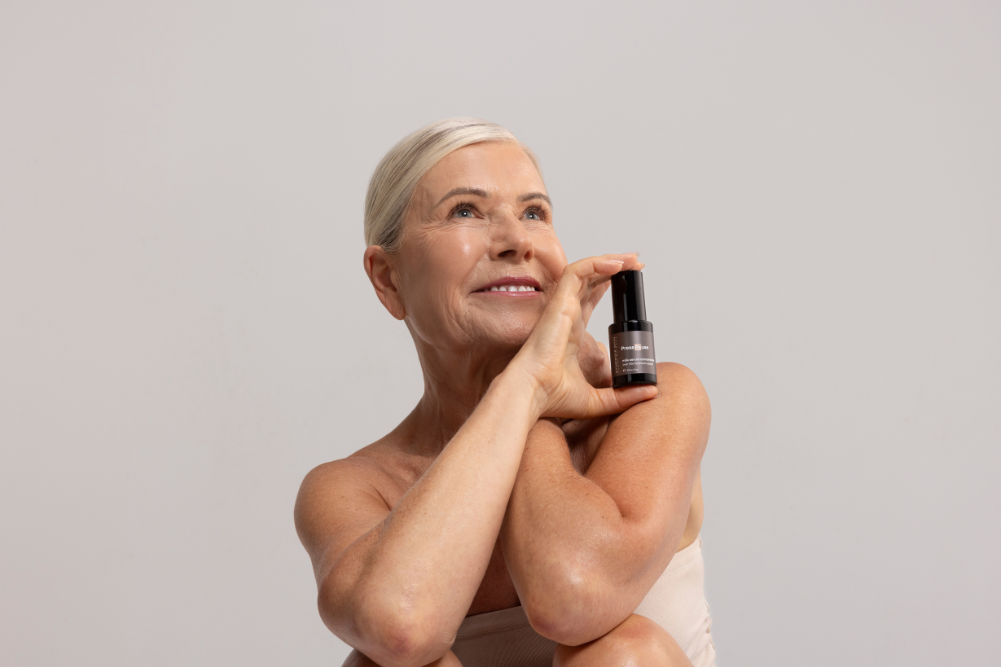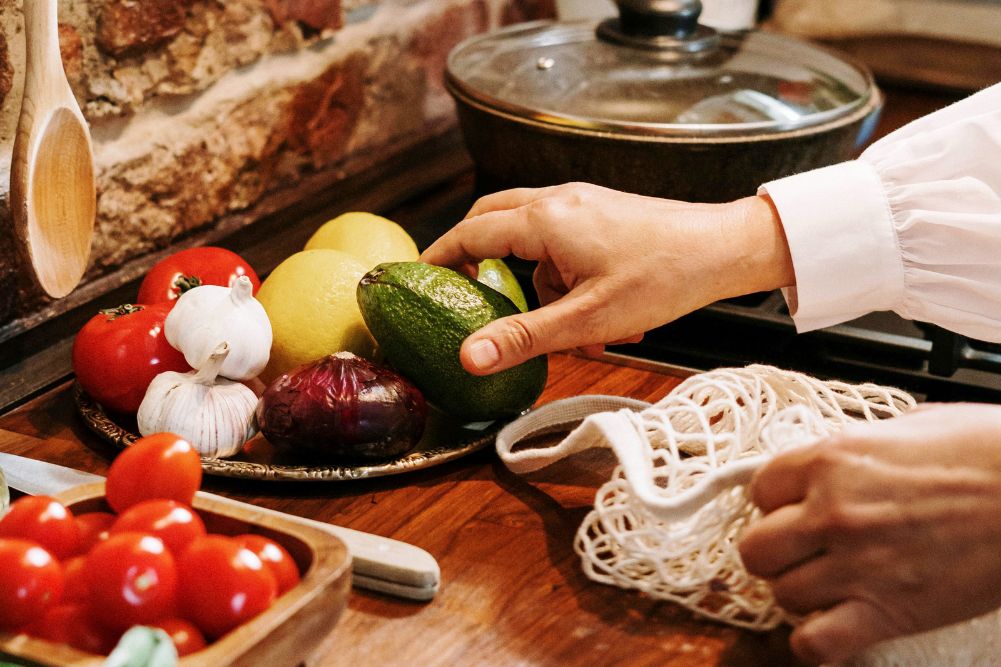Macrobiotics for longer life
Macrobiotics
The Oxford Dictionary defines macrobiotics as the science of prolonging life. Macrobiotics means macro: great, biotics: life, or living life to the fullest with joy and health. The macrobiotic approach is based on the view that we are the result of, and are continually influenced by, our total environment, which ranges from the foods we eat and how we prepare them to the lifestyle we choose to lead and the climate and geography in which we live.
Macrobiotics amounts to understanding our physiological/biological limitations and living within them in a state of balance. This also leads to the cultivation of humility. The macrobiotic way of life teaches us that we are part of nature and the more we live in accordance with the natural laws, the healthier and happier we will be. Apart from teaching us the profound effect food has on our wellbeing, macrobiotics emphasises that the way we eat affects us physically, emotionally, mentally, sexually and spiritually.
Macrobiotics relies on the principles of yin and yang for understanding the effect the environment and food have on an individual. Yin is expansion, cold and passive, and lunar energy. Yang is contraction, active and solar energy. For example, consuming too many yin foods, such as fruits, caffeine, alcohol and sugar, will create an excess yin condition, resulting in headaches, fuzzy thinking, passiveness and lethargy. This is because yin rises upward, causing energy to disperse into the head. This is another reason why a yin headache, such as a hangover, cannot be treated by aspirin another extreme yin substance. Yang foods, such as animal protein, fish caviar and salt, cause the energy to move downward and create contraction in the body. An excess yang condition leads to aggressiveness, impatience and rigidity of the mind and body. The ideal is a balance of yin and yang, achieved by following the basic macrobiotic guidelines.
The foundation of the macrobiotic diet is based on 50-60 per cent whole grains. This includes brown rice (both short and long grain), whole wheat, barley, millet, oats, rye, corn, buckwheat, cracked wheat and rolled oats. Wholegrains are right in the middle of the yin/yang spectrum. The Eastern term for peace combines the two words rice and mouth, while the Chinese calligraphy for energy, chi, combines the characters for rice and breath. By eating more wholegrains, we cultivate a more balanced energy in our body and thus become more grounded, centred and calm.
The remainder of the macrobiotic diet comprises 25-30 per cent vegetables (locally grown and seasonal); 5-10 per cent beans; 5-10 per cent soups and sea vegetables and five per cent supplemental foods such as seeds, nuts, fish (optional), pickles, oils, and fruit and desserts, which are to be consumed occasionally but not on a daily basis.
Its interesting to note that the foundation of the macrobiotic diet is based on human biology. The structure of our teeth indicates were designed to chew more grains and vegetables than meat. We have a total of 32 teeth. Twenty are molars, which are specifically for grinding grains. The most important stage of digestion of grains takes place in the mouth while we are chewing and not in the stomach, as with meat, which requires hydrochloric acid for its breakdown. We also have eight incisors for biting fibres of vegetables and four canines for tearing meat.
Additionally, human intestines are four times as long as those of carnivorous animals, allowing our digestive system plenty of time to process high-fibre foods. Since our intestines are so long, animal foods tend to remain in our body too long, creating putrefaction and toxic buildup. A number of scientific studies have concluded that this may lead to cancer. In Oriental medicine, the brain and the small intestine are connected energetically. The condition of the intestine greatly affects the state of our mind/brain and, thus, our thinking capabilities. The fewer toxins we have, the better and clearer we think and our thoughts become more refined.
Chewing
The finer points of food combining and its preparation based on the yin/yang principle is perceived to be very important in practising macrobiotics, but in fact its not as crucial as thorough chewing, the most important macrobiotic tenet. How we eat is just as important as what we eat.
Macrobiotics teaches us that chewing well is a primary factor in health and transformation. Thorough chewing means chewing each mouthful at least 50 times (ideally 100 times) for physical, emotional, mental health as well spiritual progress. There are many macrobiotic gurus who conduct half-fasting retreats around the world based on chewing each mouthful 200 times. These retreats are very popular and successful, as people experience dynamic healing shifts, as well as states of bliss. They also report tangible improvement in serious conditions such as asthma, structural/muscular back ailments and even cancer. This is due partly to the fact that thorough chewing activates the entire endocrine gland system and promotes rejuvenation.
Power eating program
Lino Stanchich, a macrobiotic expert, has developed PEP (Power Eating Program) as a result of a discovery his father, Antonio Stanchich, made during his imprisonment in a Nazi concentration camp in 1943. Antonio survived the harsh conditions by chewing his food and water 50-75 times per mouthful. He found that this amount of chewing gave him extra energy and he was able to withstand the cold.
He increased it to 100-150 times for dinner and found that he did not get sick like the others. He taught this technique to two of his fellow prisoners. After two years in the concentration camp, the prisoners were liberated. Of the 32 originally imprisoned with Antonio, only three survived: Antonio and the two friends he taught his chewing technique.
The basics of PEP are that we should be conscious of what we are doing while chewing. Eating in silence, preferably with eyes closed, allows us to go within ourselves and observe a sacred experience. In his PEP seminars, Lino teaches an ideal position for chewing. Sitting with our back straight, feet touching and hands interlocked into a mudra, where all the fingers of the left hand are touching all the fingers of the right hand. This position relaxes the shoulders and calms the mind.
In Traditional Chinese Medicine, the lung meridian flows through the thumbs and when we connect our thumbs we complete a circuit that strengthens our lungs and our breath. In addition, the large intestine meridian flows through the index fingers. Energy from the lungs goes to the large intestine, affecting our entire digestive tract. When the feet touch, and one hand touches the other hand, the energy circulates throughout the body. When such a posture is adopted while eating, a powerful energy cycle is formed.
Therefore, two or three times a day, the art of eating and the art of meditating can merge into one spiritual practice. Moreover, PEP facilitates greater satisfaction, as well as a state of bliss, for a number of biological reasons, discussed below. PEP is such a powerful technique that hundreds of people around the world have attributed it with not only healing serious conditions but cultivating a more harmonious and spiritual existence.
The Hunza people of the Himalayas are known for their longevity, as well as their practice of thorough chewing. Dr Tommozaburo Ogata, a professor at the School of Medicine at the University of Tokyo, has conducted extensive research on rejuvenation. Ogata discovered that thorough chewing revitalises the body because it activates the parotid glands, located behind each ear, which release parotin. Chewing well causes the parotin to be absorbed through the lymph system. The hormone renews cells and positively affects the entire endocrine system.
The more we chew, the more we stimulate our vertebral column. There are 32 teeth and 32 vertebrae. Added together, this makes 64, which is also the number of hexagrams in the I Ching. As a result of more chewing, the whole nervous system is positively stimulated. This chewing pressure strongly activates the circulatory system as well, due to the muscular activity of moving the jawbone.
The more we chew, the more blood is drawn to the muscles. There are 15 pairs of muscles attached to the jaw and the digestive, nervous and circulatory systems are enhanced by thorough chewing. Blood contains iron and has magnetic properties, resulting in a current of energy going from hinge muscle to hinge muscle, around and through our heads. Three meridians the stomach, small and large intestine cross the jaw and are also stimulated as a result of chewing.
Heaven and earth
Positive yang energy from the heavens spirals down through the centre of the head and hits the uvula (the piece of skin hanging from the roof of the mouth). From the earth, through our feet, the negative yin energy spirals up and collects in the tongue. This energy between earths force coming up and heavens force going down culminates at the tongue. By chewing food until it becomes liquid we harness these energies from heaven and earth at the tongue, which energises our food.
This energy then circulates between the ears. At this meeting point, right in the middle of the head, is the hypothalamus and the pituitary gland. The pituitary gland picks up this charged energy and is stimulated to release the hormones that control all the functions of the thyroid, pancreas, adrenal cortex and sex organs.
The more we chew, the more the food is mixed with saliva. Saliva has antimicrobial properties. Streptococcus, staphylococcus and the AIDS virus cant live in saliva. The salivary glands produce enzymes that begin digesting carbohydrates in the mouth. Ptyalin is an active, digestive enzyme produced by the parotid glands that breaks down carbohydrate and converts it into glucose. The stomach cannot do this by itself.
Ptyalin also stimulates the tonsils to send a signal to the thymus to produce more natural killer T cells. Noboru Muramoto discovered this 12 years ago in Japan, where his studies revealed that the more we chew, the more the ptyalin stimulates the tonsils to send a signal to the thymus to produce a mature, stronger, killer T cell. Even if we had our tonsils removed, vertebrae stimulation by thorough chewing activates the immune system. Each vertebra has a direct influence on various organs and glands a fact well known to chiropractors.
Some of the benefits of thorough chewing include improved digestion; more energy and endurance; faster healing; stimulation of the whole endocrine system and glands, eliminating more toxins; promotion of deeper relaxation; cultivation of patience, self-control and spiritual awareness even bliss. This occurs because the heaven and earth energies meet in our mouth while we chew the downward yang energy on the uvula meeting with the earths expanding yin energy at the tongue. As food is chewed, the uvula and the tongue charge the food and an energetic transformation takes place. The more we chew, the more this energy circulates in our head and stimulates the hypothalamus (the master gland), which stimulates the pituitary gland to release more hormones that rejuvenate and positively influence our entire body. The processes of digestion and assimilation continues further on mental, emotional and spiritual levels, as the energy of the food is released into its finer vibrations, known as vipak in Ayurveda, thus creating our mood and influencing our mental state.
Thorough chewing, as taught in PEP, promotes a feeling of bliss because the brain receives about 20 per cent more oxygen. Making PEP a regular practice will yield a number of benefits, such as increased intelligence, improved memory functions and increased self-awareness. With more self-awareness were able to observe and detach ourselves from certain events/emotions and allow a shift of consciousness to occur within us. Maybe this is another reason why PEP helps to heal serious health conditions, because no permanent healing can occur without a shift of consciousness.
The rate at which we chew our food is also important and affects the energy in our entire body. If we chew quickly, we become more active and, when feeling slow and lethargic, conscious speeding of our chewing pattern will revitalise our metabolism and promote vigour and vitality.
Macrobiotics is about understanding our own conditions based on yin/yang philosophy and being creative with our food choices and its preparation within the basic macrobiotic guidelines. What we eat and, most importantly, how we eat, as detailed in PEP, produce overall wellbeing and foster a more spiritual connection to our environment and other people. No textbook can prescribe for these unique sets of circumstances. Rather, macrobiotics teaches us to make our own choices, based on our own unique conditions of yin/yang in our mind-body system and to learn from these experiences.
Macrobiotics is about having the wisdom of the food/mind/body/spirit connection and using it appropriately for our individual conditions. In macrobiotics serious conditions can be healed through food (as long as we chew it thoroughly), since food is a living vibration. When we practise macrobiotics and PEP, our body will appreciate food more and seek a balance. Its an understanding gained not via the intellectual mind but through the bodys own experience. This experience not only empowers us but also ultimately connects us with our spiritual essence. Basically, macrobiotics and PEP facilitate healing on all levels and foster a spiritual connection to all life.
Vikki Sky MA BA Dip Health Sciences, ATMS, AKA is a holistic kinesiology instructor, kinesiologist, holographic repatterning practitioner and macrobiotic/vegetarian cook. T: 0416 290 100
E: viki_sky@yahoo.com.au www.holographic.org
www.healthdimensions.com.au
Macro patties for all seasons
These nutritionally packed macrobiotic patties are perfectly balanced between yin and yang and lend themselves to being served at any time of the year as part of a meal or a quick snack.
Ingredients
150g raw short-grain brown rice
100g raw organic red lentils or azuki beans
100g raw wholemeal spelt flour (or rice/amaranth flour for gluten-free version)
Wholemeal or spelt breadcrumbs (rice breadcrumbs for gluten-free)
1-2 heaped teaspoons cinnamon
60g finely chopped walnuts
2 tablespoons poppy seeds
1 heaped teaspoon dried ginger spice
1-2 large carrots (shredded)
6 shallots or medium onion
1 tablespoon extra virgin olive oil or sesame oil
2 strips kombu
1 teaspoon seasalt (Atlantic or southern seas)
1-2 tablespoons wheat-free organic tamari
Method
After rinsing the rice and lentils, soak brown rice, lentils or azuki for 24-48 hours with two strips of kombu in filtered water. Grains and pulses should always be soaked for at least 24 hours before cooking as it makes them easier to digest and helps eliminate gas and bloating.
Bring grains to boil, add poppy seeds and cook on low flame for 45 minutes to 1 hour. Just before the end of cooking, add seasalt, cinnamon, dried ginger and tamari. (Adding seasalt to pulses and beans also eliminates gas and bloating.) Remove kombu (this kombu can be eaten with tamari). Add finely chopped shallots or minced onion, carrots, olive oil, walnuts (optional for a crunchier texture), spelt flour or the gluten-free variety (rice, amaranth, millet flour). Mix all the ingredients thoroughly and spoon 1 heaped tablespoon of the mix into a ball and roll it in wholemeal breadcrumbs or spelt breadcrumbs (rice breadcrumbs for gluten-free version). Flatten the patties so they are 1-2cm thick.
Put on slightly oiled baking tray (virgin olive oil is good) or use baking paper and bake at 200 degrees Celsius for 30 minutes. Cool and serve with either some organic flaxseed oil poured on top or unhulled tahini as it makes a rich sauce to dip the patties into. Garnish and serve with rocket salad.
This recipe makes 14-16 medium-sized patties.
Chewing through the ages







